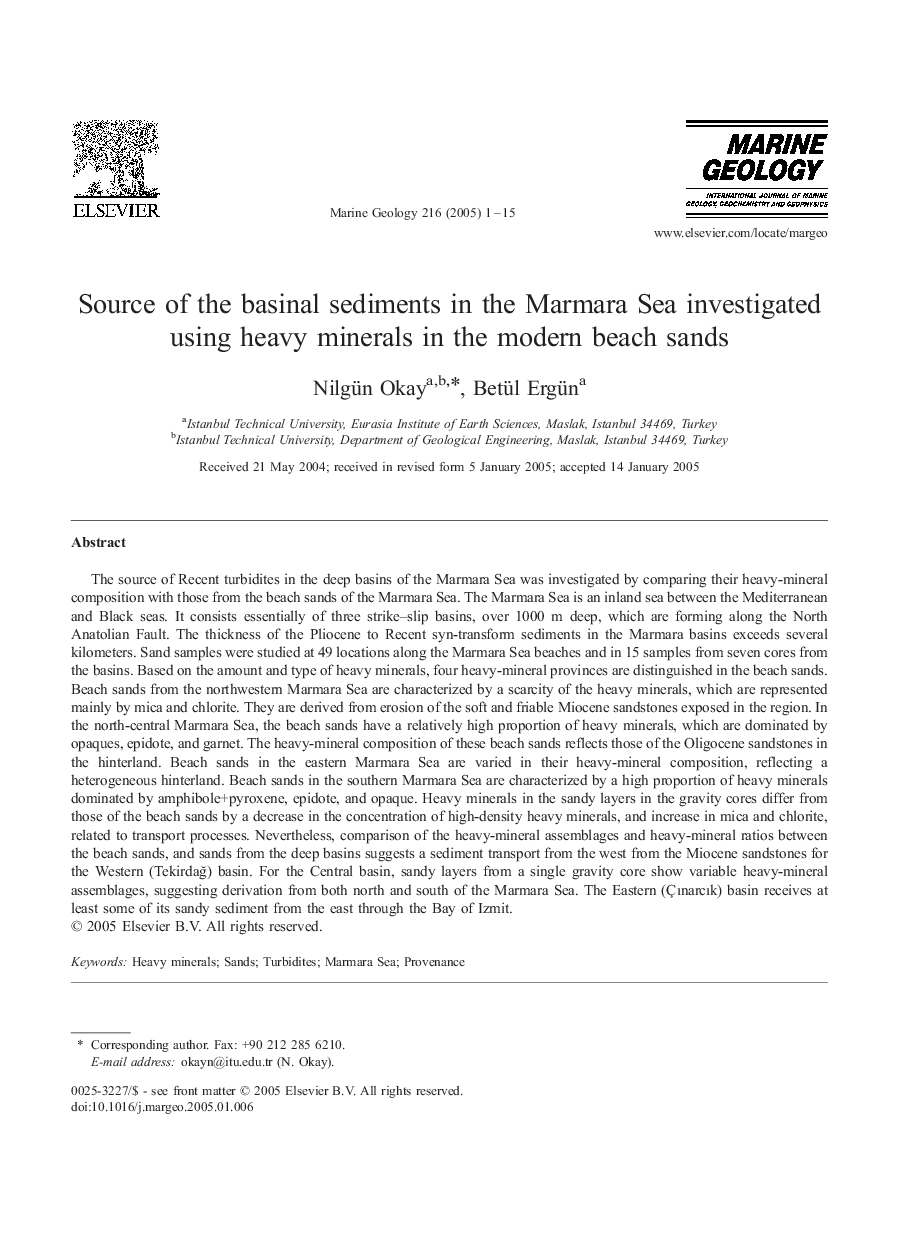| کد مقاله | کد نشریه | سال انتشار | مقاله انگلیسی | نسخه تمام متن |
|---|---|---|---|---|
| 9532550 | 1639227 | 2005 | 15 صفحه PDF | دانلود رایگان |
عنوان انگلیسی مقاله ISI
Source of the basinal sediments in the Marmara Sea investigated using heavy minerals in the modern beach sands
دانلود مقاله + سفارش ترجمه
دانلود مقاله ISI انگلیسی
رایگان برای ایرانیان
کلمات کلیدی
موضوعات مرتبط
مهندسی و علوم پایه
علوم زمین و سیارات
ژئوشیمی و پترولوژی
پیش نمایش صفحه اول مقاله

چکیده انگلیسی
The source of Recent turbidites in the deep basins of the Marmara Sea was investigated by comparing their heavy-mineral composition with those from the beach sands of the Marmara Sea. The Marmara Sea is an inland sea between the Mediterranean and Black seas. It consists essentially of three strike-slip basins, over 1000 m deep, which are forming along the North Anatolian Fault. The thickness of the Pliocene to Recent syn-transform sediments in the Marmara basins exceeds several kilometers. Sand samples were studied at 49 locations along the Marmara Sea beaches and in 15 samples from seven cores from the basins. Based on the amount and type of heavy minerals, four heavy-mineral provinces are distinguished in the beach sands. Beach sands from the northwestern Marmara Sea are characterized by a scarcity of the heavy minerals, which are represented mainly by mica and chlorite. They are derived from erosion of the soft and friable Miocene sandstones exposed in the region. In the north-central Marmara Sea, the beach sands have a relatively high proportion of heavy minerals, which are dominated by opaques, epidote, and garnet. The heavy-mineral composition of these beach sands reflects those of the Oligocene sandstones in the hinterland. Beach sands in the eastern Marmara Sea are varied in their heavy-mineral composition, reflecting a heterogeneous hinterland. Beach sands in the southern Marmara Sea are characterized by a high proportion of heavy minerals dominated by amphibole+pyroxene, epidote, and opaque. Heavy minerals in the sandy layers in the gravity cores differ from those of the beach sands by a decrease in the concentration of high-density heavy minerals, and increase in mica and chlorite, related to transport processes. Nevertheless, comparison of the heavy-mineral assemblages and heavy-mineral ratios between the beach sands, and sands from the deep basins suggests a sediment transport from the west from the Miocene sandstones for the Western (TekirdaÄ) basin. For the Central basin, sandy layers from a single gravity core show variable heavy-mineral assemblages, suggesting derivation from both north and south of the Marmara Sea. The Eastern (Ãınarcık) basin receives at least some of its sandy sediment from the east through the Bay of Izmit.
ناشر
Database: Elsevier - ScienceDirect (ساینس دایرکت)
Journal: Marine Geology - Volume 216, Issues 1â2, 30 March 2005, Pages 1-15
Journal: Marine Geology - Volume 216, Issues 1â2, 30 March 2005, Pages 1-15
نویسندگان
Nilgün Okay, Betül Ergün,